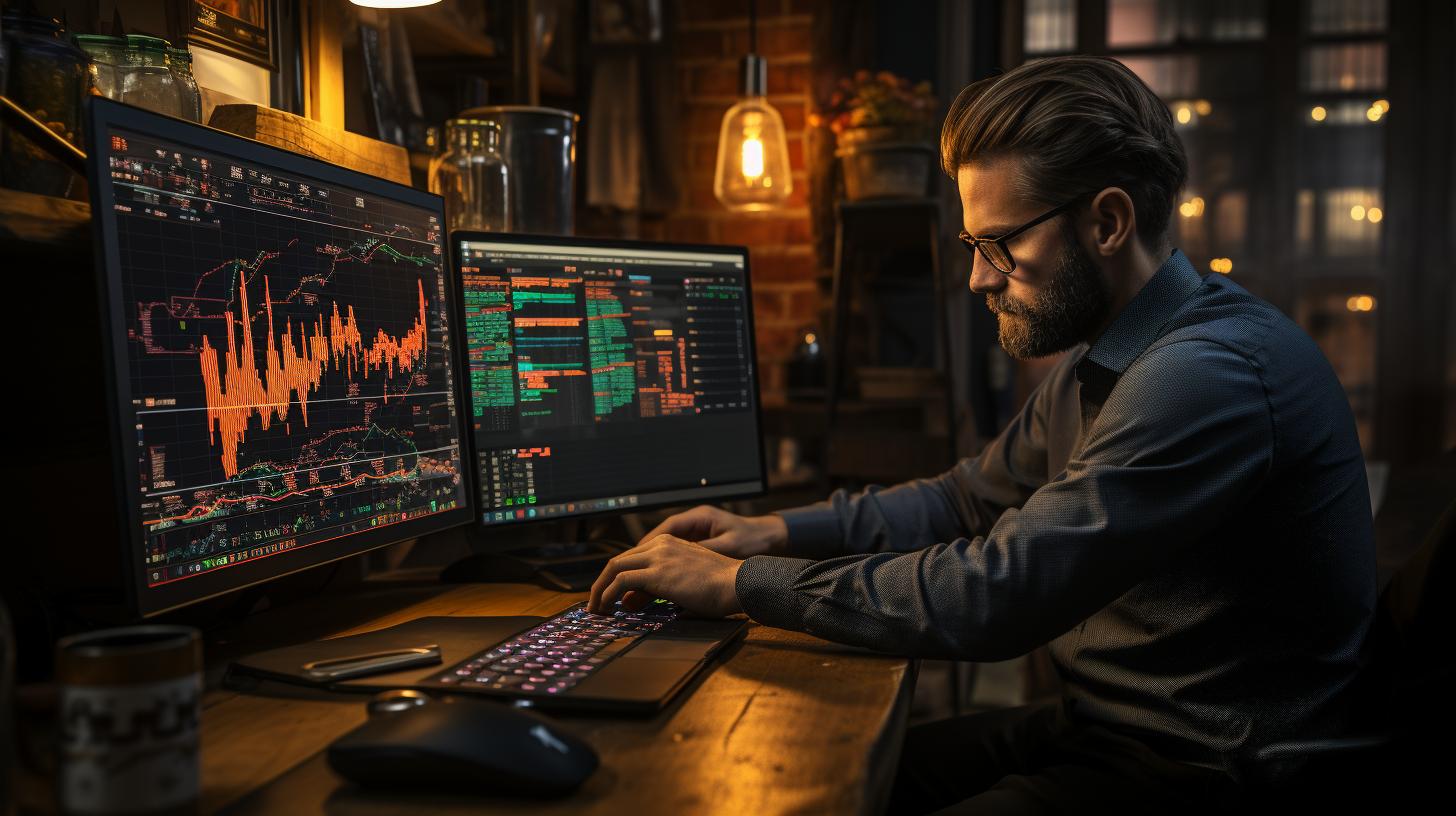
Foreign exchange, or ‘forex’ trading, remains enigmatic for many despite being the world’s most substantial financial market. A staggering $6.6 trillion being traded daily, as recorded in 2019 by the Bank for International Settlements (BIS) [1], creates an undeniable allure. Yet, for beginners, this world can appear overwhelming. Fear not. This piece endeavors to demystify forex trading, equipping neophytes with a practical compass.
[1] Bank for International Settlements (2019). Triennial Central Bank Survey of Foreign Exchange and Derivatives Market Activity. https://www.bis.org/statistics/rpfx19.htm
Deciphering Forex Trading: The Fundamentals
At its core, forex trading is a simple act: purchasing one currency whilst simultaneously offloading another. This exchange is primarily fueled by speculation over the future performance of one currency against another. If, for instance, you project a future strengthening of the Euro against the US Dollar, the logical step would be to purchase the EUR/USD currency pair.
In this equation, currencies trade in pairs to showcase the comparative value of one currency against its counterpart. The first currency in a pair, known as the “base currency,” finds its value indicated against the second, the “quote currency”.
The Framework of Forex Trading: Market Infrastructure
Contrasting with stock markets that have physical exchanges – think the New York Stock Exchange – the forex market thrives in a decentralized format, operating round-the-clock five days a week. It pulses through a worldwide network of banks, corporations, and individual traders exchanging one currency for another.
Forex traders are as varied as the market is broad: from multinational corporations and financial institutions to governments and individual traders like you and me. Some are involved in forex trading as a career, while others employ it as a tool to hedge risk or make speculative gains.
Leverage: The Catalyst of Forex Trading
Forex trading is characterized by the strategic use of leverage, enabling traders to manipulate a significant sum of money with only a minor initial deposit or ‘margin.’ For instance, a leverage ratio of 100:1 allows a trader to control a currency worth $100,000 with a mere $1,000 deposit. This power of leverage can be a double-edged sword, significantly magnifying potential profits or losses.
Embarking on Forex Trading: A Step-by-Step Approach
1. Begin with Education
Education stands as the gateway for novice traders. The digital world offers a host of platforms providing forex trading courses, resources, and books free-of-charge that delve into basic concepts, strategies, and terminologies. Standout platforms include Babypips, the Forex Trading A-Z course on Udemy, and Forex.com [2].
[2] Forex.com. Education and Guides. https://www.forex.com/en-uk/education/
2. Utilize a Demo Account
Majority of forex brokers provide demo accounts, offering beginners an invaluable platform to practice trading with faux money. This facility allows traders to comprehend market dynamics without the associated risks.
3. Chalk Out a Trading Plan
Prosperous trading hinges on a strategic plan, encompassing pre-defined entry, exit, and money management rules. Your plan should also factor in your risk tolerance, trading objectives, and the specific strategies you plan to utilize.
4. Initiate Live Trading
Once you have grown comfortable with your demo trading, the next step is to transition to a live account. It’s advisable to begin small and continue to refine your trading plan based on experience.
Conclusion: The Balancing Act of Forex Trading
Just as with any investment venture, forex trading carries inherent risks. The allure of high leverage, although potentially lucrative, can precipitate substantial losses. Thus, implementing robust risk management strategies and committing only what one can afford to lose is of paramount importance.
Successful forex trading isn’t solely about making profitable trades. It hinges on the discipline to adhere to your trading plan, effectively manage risks, and the willingness to learn continually. To borrow a famous adage, “In the world of trading, it’s not the strongest who survive, but the most adaptable.”
FAQs
How does a beginner start learning Forex trading?
It’s all about diving into the basics first, mate! You gotta understand what currency pairs are, key market terms like pip, spread, margin, and leverage. Find a reliable broker and a solid trading platform, and you’re ready to roll!
What are the most traded currency pairs?
Your major players are the “majors” in the currency market. EUR/USD, USD/JPY, GBP/USD, and USD/CHF are the usual suspects. These pairs are liquid and have tighter spreads. They’re a great starting point for new traders.
How do I choose a trading strategy?
That’s like choosing your favorite pair of jeans, mate. You gotta find what fits you best! Trend-following, scalping, swing trading, or position trading? You can even mix things up and create a hybrid strategy. Experiment and backtest until it clicks!
What’s a pip? Sounds like a fruit!
Haha, not quite! In Forex, a pip is a ‘point in percentage’. It’s the smallest unit of price movement for a currency pair. If EUR/USD moves from 1.1850 to 1.1851, that’s a 1 pip movement, amigo!
How much money do I need to start trading?
You can start dabbling with just a few hundred bucks, but remember, more capital gives you better margin for error. But don’t forget: Only trade with money you can afford to lose!
What are the risks involved?
Oh, it’s a wild ride, buddy! Market volatility, leverage risks, liquidity issues, broker insolvency are all risks. Then there’s execution risk if your trades don’t go through at your desired price. Get a solid risk management plan!
How important is a Forex trading plan?
Essential, my friend! It’s your road map. It includes your financial goals, risk tolerance, methodology, and evaluation criteria. Stick to the plan, and remember, emotions are a trader’s worst enemy!
Can I trade on weekends?
Forex is a 24/5 market, pal, so it’s lights out over the weekend. But remember, the crypto market is open 24/7, so you can always switch to Bitcoin trading when Forex takes a breather.
What is leverage and how does it work?
Leverage is your trading superpower! It allows you to trade larger positions than your account balance. High leverage can lead to higher profits, but also to significant losses. Always use this power wisely!
How do I keep up with market news?
Keep your eyes and ears open, mate! Follow financial news outlets, use economic calendars, and join trading communities. The market reacts to news, so staying informed is your ticket to success!
How important is technical analysis in Forex trading?
It’s like your GPS in the Forex jungle, buddy. It helps predict future price movements based on historical data. Candlestick patterns, trendlines, support/resistance levels, moving averages, and indicators like MACD or RSI – all these are part of your technical toolkit.
What is a Forex broker?
A broker is your gateway to the Forex market. They provide the platform for trading and handle your orders. Choosing a trustworthy broker with tight spreads, fast execution, and solid regulation is crucial, so do your homework!
